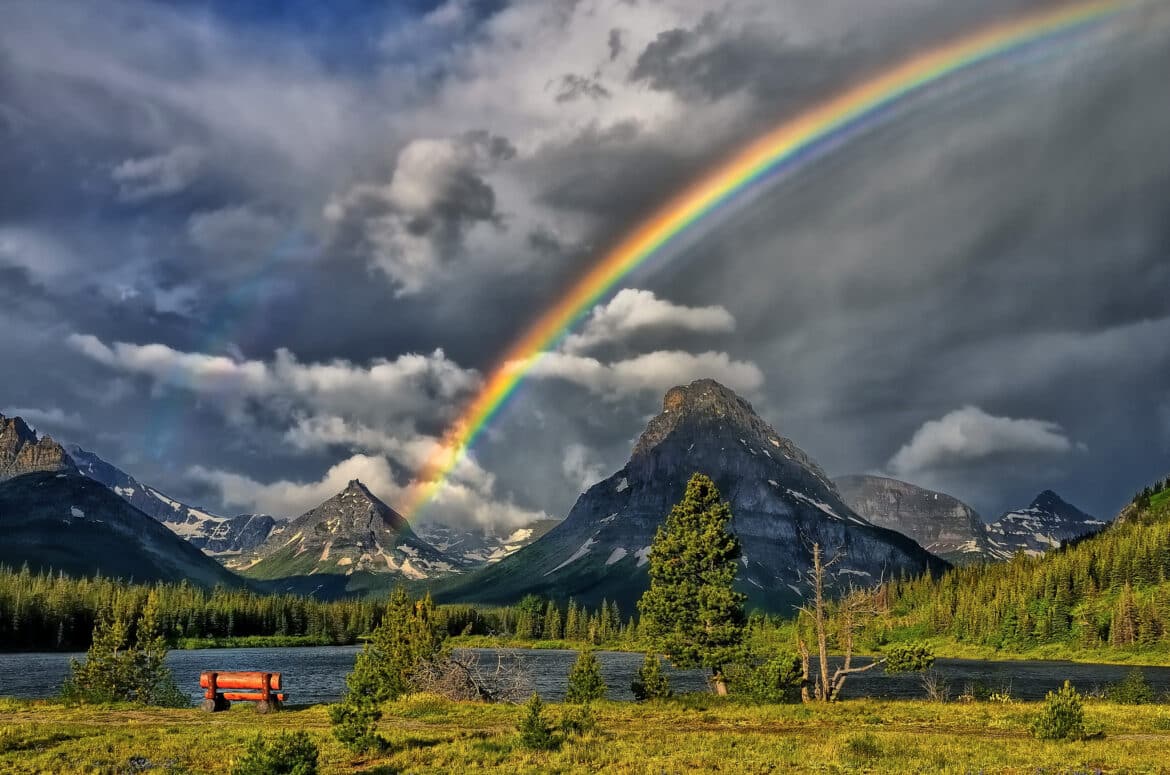1.8K
A rainbow is formed when the sun shines and raindrops fall or are contained in a cloud at the same time. The reason for the bright colours is the refraction of the sunlight.
How is a rainbow made? Simply explained
When the sun is behind us and rain falls on the earth or a rain cloud is just moving away, we can see a rainbow. The reason for this is the so-called dispersion of light through refraction.
- The sunlight that shines on the earth is white and contains all the spectral colours.
- When the light hits a raindrop, it is refracted by the transition from air to water.
- However, the spectral colours are refracted to different degrees, which is why white light is broken up. For example, red light is refracted more than blue light. ( Red: 42°; Blue: 40°).
- Most of the light emerges again from the raindrop or from water to air, but a small part of the light is reflected inside and split into the components again.
- A larger angle in the rainbow means more refraction. The colours from the inside out are violet, blue, green, yellow, orange and red.

